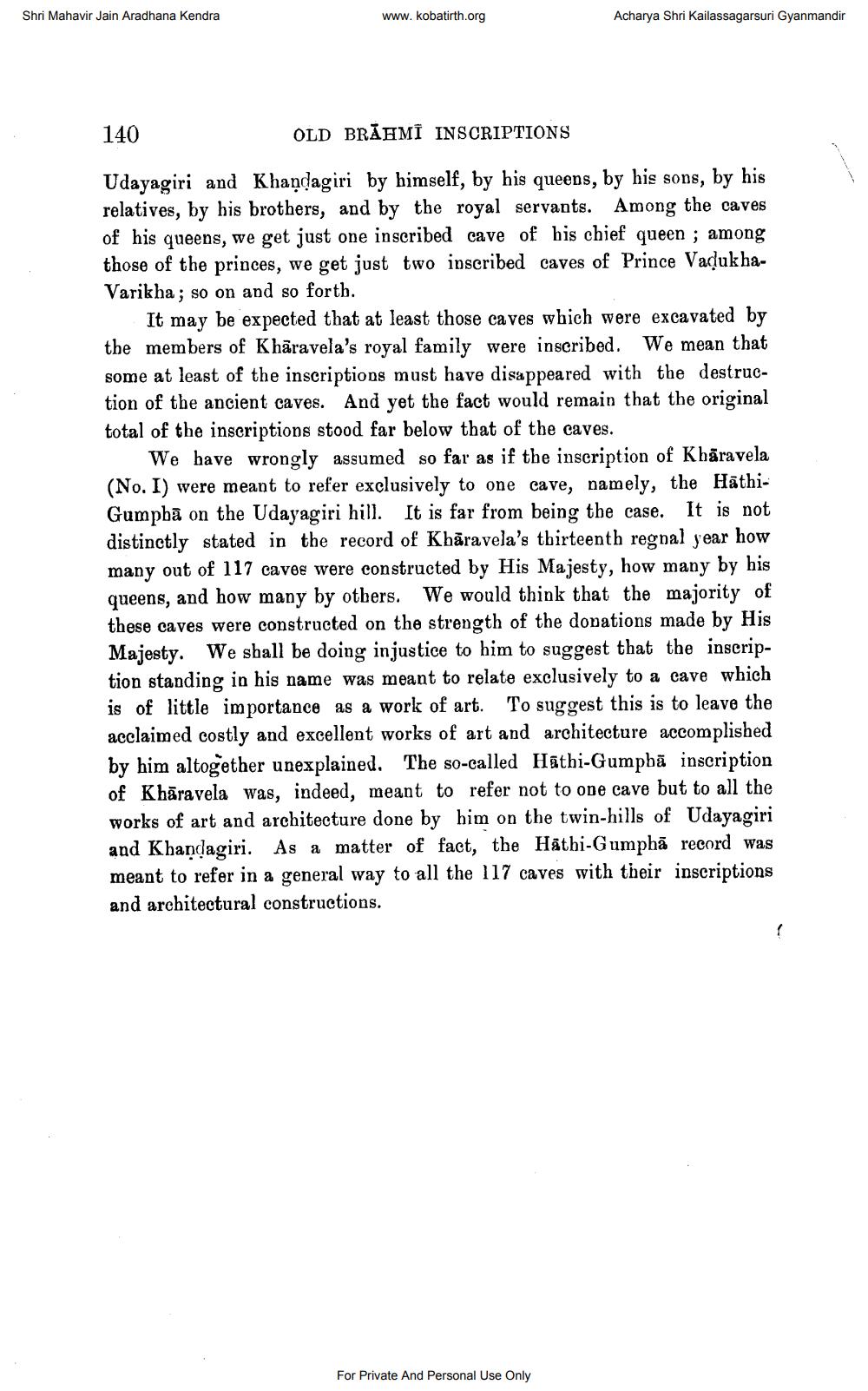________________
Shri Mahavir Jain Aradhana Kendra
www.kobatirth.org
Acharya Shri Kailassagarsuri Gyanmandir
140
OLD BRĀHMI INSCRIPTIONS
Udayagiri and Khandagiri by himself, by his queens, by his sons, by his relatives, by his brothers, and by the royal servants. Among the caves of his queens, we get just one inscribed cave of his chief queen ; among those of the princes, we get just two inscribed caves of Prince Vaduk haVarikha; so on and so forth.
It may be expected that at least those caves which were excavated by the members of Khäravela's royal family were inscribed. We mean that some at least of the inscriptions must have disappeared with the destruction of the ancient caves. And yet the fact would remain that the original total of the inscriptions stood far below that of the caves.
We have wrongly assumed so far as if the inscription of Kbāravela (No. I) were meant to refer exclusively to one cave, namely, the HathiGumpbā on the Udayagiri hill. It is far from being the case. It is not distinctly stated in the record of Khāravela's thirteenth regral year how many out of 117 caves were constructed by His Majesty, how many by his queens, and how many by others. We would think that the majority of these caves were constructed on the strength of the donations made by His Majesty. We shall be doing injustice to him to suggest that the inscription standing in his name was meant to relate exclusively to a cave which is of little importance as a work of art. To suggest this is to leave the acclaimed costly and excellent works of art and architecture accomplished by him altogether unexplained. The so-called Hathi-Gumpbā inscription of Khāravela was, indeed, meant to refer not to one cave but to all the works of art and architecture done by him on the twin-hills of Udayagiri and Khandagiri. As a matter of fact, the Hathi-Gumphā record was meant to refer in a general way to all the 117 caves with their inscriptions and architectural constructions.
For Private And Personal Use Only




